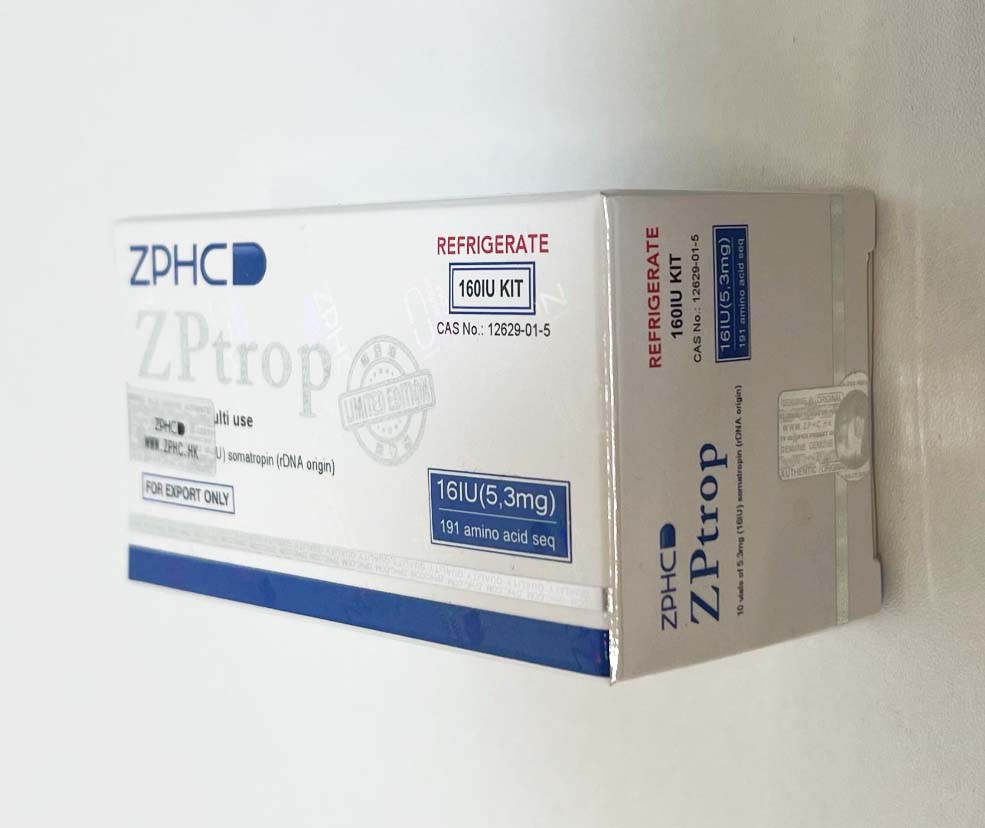The “160 IU kit” designation refers to the total amount of active ingredient across multiple lyophilized vials prior to reconstitution. Like other rhGH medicines, Zptropin is designed to be biologically similar to the growth hormone produced by the pituitary gland. This article is informational and not medical advice.
Intended Use and Regulatory Status
In legitimate healthcare settings, rhGH may be prescribed for clearly defined conditions—such as pediatric growth disorders or adult growth hormone deficiency (GHD) diagnosed via standardized testing. Laws differ by country, but in many jurisdictions it is illegal to purchase, possess, or use rhGH without a valid prescription. Sports organizations governed by the World Anti-Doping Code prohibit growth hormone in and out of competition.
What Comes in a 160 IU Kit
A typical 160 IU kit contains several vials of freeze-dried somatropin and a matching diluent or instructions to obtain sterile diluent separately. The per-vial strength, excipients, and anti-tamper features can vary by batch and market. Always rely on the official patient information leaflet packaged with your specific product.
How Somatropin Works (Plain-English Version)
Somatropin binds to growth hormone receptors, activating signaling pathways that increase insulin-like growth factor-1 (IGF-1) production—mainly in the liver. IGF-1, in turn, influences bone and cartilage growth in children and modulates protein synthesis, fat metabolism, and fluid balance. In properly diagnosed deficiency, restoring physiologic GH activity can improve clinical markers when guided and monitored by a physician.
Why Dosing Is Individualized
Despite online “IU schedules,” there is no universal dosing scheme. In clinical practice, prescribers tailor dose to age, indication, weight or body surface area, and measured response—often titrating against IGF-1 targets and side-effect profiles. Self-directed dosing raises medical and legal risks. If you are a legitimate patient, follow your prescriber’s plan exactly and keep all monitoring appointments.
Safety Profile and Possible Side Effects
Even when prescribed appropriately, rhGH can cause adverse effects, most commonly:
Fluid retention with swelling, joint discomfort, or paresthesias (e.g., carpal-tunnel–like symptoms)
Injection-site reactions or headaches (rarely signs of elevated intracranial pressure)
Changes in glucose tolerance and insulin sensitivity
Alterations in lipid profile
In youth, effects on open growth plates; in adults, soft-tissue enlargement at excessive exposures
People with active malignancy, certain proliferative retinopathies, or acute critical illness are typically advised against rhGH. Only a clinician who knows your history can weigh risks and benefits.
Storage, Mixing, and Handling (General Guidance)
Temperature: Most rhGH products require refrigeration at 2–8 °C (36–46 °F). Do not freeze.
Light/Agitation: Protect from light. Avoid vigorous shaking; if instructed, gently swirl after adding diluent.
Stability After Reconstitution: Usable lifetime post-mixing is product-specific and usually limited (often days) under refrigeration.
Because formulations and stabilizers vary, the product leaflet is the authority for exact instructions and discard dates.
Authenticity and Counterfeit Awareness
Growth hormone products are frequent targets for counterfeiting. Warning signs include inconsistent lot numbers, poor print quality, unusual caps or seals, and missing or mistranslated leaflets. Legitimate patients should obtain rhGH from licensed pharmacies against a valid prescription and verify traceability with the pharmacist.
Monitoring During Therapy
For patients on prescription rhGH, routine follow-up typically includes:
Clinical assessment of symptoms and side effects
Laboratory checks such as IGF-1 (to gauge exposure), fasting glucose or HbA1c as indicated, and sometimes thyroid/adrenal markers
Dose adjustments to maintain benefits while minimizing adverse effects
Promptly report red-flag symptoms such as severe or persistent headaches with visual changes, marked swelling or shortness of breath, or new neurologic symptoms.
Interactions and Special Situations
Somatropin can interact with glucose-lowering therapies and may unmask underlying thyroid or adrenal issues in susceptible patients. Inform your clinician about all medicines and supplements. Competitive athletes should be aware that rhGH is a prohibited substance under anti-doping rules and carries testing and sanction risks.
Common Misconceptions to Avoid
“More is better.” Excess dosing increases side effects without guaranteed additional benefit.
“Any kit is fine.” Formulations differ; instructions from one brand or batch may not apply to another.
“It’s an anti-aging cure-all.” Evidence supports rhGH for specific diagnoses—not as a general wellness or performance enhancer.
Questions to Ask Your Healthcare Provider
What testing confirmed growth hormone deficiency (or other approved indication) in my case?
What is the initial dose, and what IGF-1 range are we targeting?
How often should labs and check-ins occur?
How should I store, mix, and discard the product safely?
Which symptoms require urgent medical attention?
Bottom Line
Zptropin 160 IU kit https://veranmedical.com/product/zptropin-160-iu-kit-usa-domestic contain prescription-only somatropin intended for conditions diagnosed and managed by qualified clinicians. Safe use depends on verified authenticity, correct storage and handling, individualized dosing, and ongoing monitoring. If you are not under medical supervision, do not use rhGH; the legal, health, and sporting consequences can be serious.







